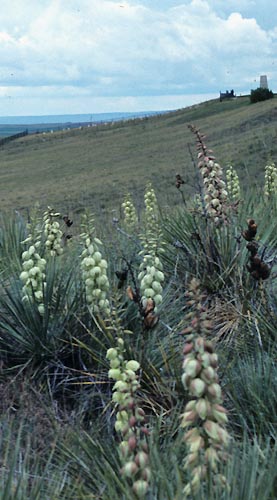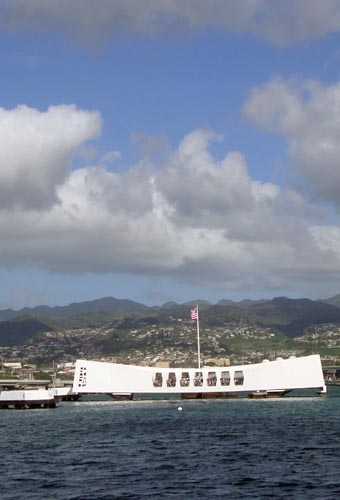| |
| |
PLUS
Best "National Monuments" in the U.S. History category
Most
historical sites maintained by the National Parks Sevice are termed
National Battlefields, National Historical Parks, National Military
Parks, National Historic Sites, and similar names. Those involved
interpreting the Civil War are discussed in another project
on this website. Yet a few battlefields and a few forts are formally
designated as "National Monuments." This is a nomenclatural oddity
arising for various reasons in the past. I've limited my "Top 10"
National Monuments (above) to traditional National Monuments preserving
natural wonders or pre-historic archaeology. These three (below)
preserve important aspecits of United States history.
|
|
| |
| Bonus |
Little Bighorn NM Montana |
|
|
 |
A buglar in historic garb plays taps at Little Bighorn NM (above). Commonly referred to as Custer's Last Stand,
this is where George Armstrong Custer's battlion of the 7th Cavalry
Regiment was entirely destoyed by the combined forces of several
thousand Lakota, Northern Cheyenne, and Arapaho, led by Crazy Horse and
Chief Gall, and inspired by the visions of Sitting Bull. Somewhat
mythologized battle paintings (right) are hung in today's visitor
center. The battles of June 25–26, 1876, including Major Reno's action
several miles south (left, looking north to the Custer memorial), were
an overwhelming victory for the Lakota and allies.
The battlefield
covers the rolling hils above the Little Bighorn River, and the old
cemetery at the "Last Stand" site (below), shown here as an afternoon
thunderstorm arrives.
|
|
|
|
| |
| |
| Bonus |
World War II Valor in the Pacific NM Hawaii, Alaska, California |
|
|
 |
World War II Valor in the Pacific NM has 8 sites in Hawaii, Alaska, and California. The key site is the USS Arizona memorial (left), resting on the battleship sunk by the Japanese at Pearl Harbor on Dec. 7, 1941. Today, the USS Missouri (right and above) is anchored on battleship row, near the Arizona memorial. The Missouri
was not at Pearl Harbor in 1941, but WWII ended with the Japanese
surrender on its deck. A fine museum on the Pacific war overlooks Pearl
Harbor.
The Japanese invaded Attu I., the easternmost of the Aleutians, in June 1942. The battle to reclaim it in May 1943 was difficult and bloody. The surrounded Japanese committing suicide in Massacre Valley (below). I visited Attu as a birder in 1980. Ruins of war remain everywhere.
|
|
|
|
|
A
final unit has been authorzed in northeastern California. There is
currently (2015) not much to see at the Tule Lake segregation center;
it is just a vacant lot. It was among several internment camp used to
incarcerate Japanese Americans forcibly removed from the west coast of
the U.S. during WWII.
It also became a work camp for German and Italian prisoners during 1944-46 (left). |
|
|
| |
| |
| Bonus |
Lava Beds NM California |
|
|
 |
Lava
Beds NM is extreme northeast California combines a rugged lava flow
with American history. The old lava flows are impressive, complete with
cinder cones (below) and lava tubes
that can be explored with a lantern (something I did when I was 19
years old, right). There are 25 lave tubes with marked entrances and
trails, the largest concentration in North America.
The rugged lava provided defensive works for the Modoc tribe during the Modoc War
of 1872-1873 (above; inset is a photo of American troops during the
War). Under the leadership of Captain Jack, the Modocs used "Captain Jack's Stronghold"
to hold off an Army ten times larger. Just 53 fighting men and their
families held off US Army forces for five months. Gen E.R.S. Canby was
killed in April 1873 by Captain Jack at a meeting to negotiate peace
terms. The site is marked by "Canby's Cross" today (left).
|
\  |
|
|
| |
| |
|
| |
|
|
|
CREDITS — photos & text © Don Roberson |
| |
|
|